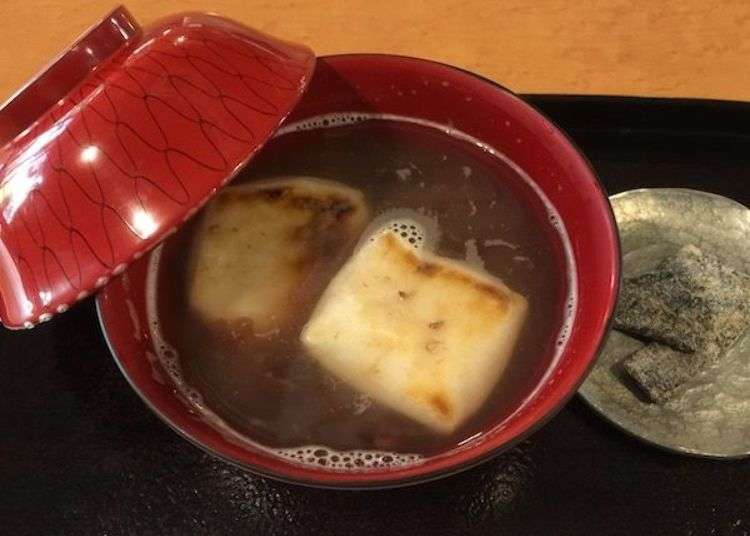
Zenzai is a traditional Japanese dessert soup made with azuki beans and mochi rice dumplings. This temptation from western Japan is hard to resist once the weather turns really cold and you are chilled to the bone.
Zenzai is something even a man out on his own is eager to wolf down. Finding a shop offering this temptation while out walking is impossible to resist. Walking around an area a short distance from the city center of Osaka I visited three famous zenzai shops.
1. Mochiso Shizuku: Stylish zenzai in Shinmachi, the geisha quarter of bygone days
Sure you can also eat zenzai in department stores and underground malls, but it is not the same because the heating in the building has already warmed you up (but that's just my personal opinion). Stepping into a warm zenzai shop from the freezing outdoors and smelling the sweet aroma of Japanese red bean sweets...now that is best (I'm really spoiled).
One day, when I was having that conversation with a female editor of a gourmet magazine, without missing a beat she replied, “So, why don’t you go to Mochiso Shizuku in Shinmachi?” I had heard that it had delicious Daifuku mochi [rice cake stuffed with sweet bean jam], but does it have zenzai, I asked. “Only in the winter. It’s really delicious.”
As I prepared to go out, she added, "But they still haven't gotten in the Tamba Dainagon azuki bean variety used for the zenzai.” In 2015 zenzai was served from early December, but this winter it was not served until January 7, 2017. That was when I received word it was available.
![▲The Japanese-style confectionery shop in the back, famous for its chestnut steamed yokan [sweet bean jelly], was founded in 1877. This is one shop that still has memories of the geisha quarter. The awning of the hamburger shop in front stands in stark contrast.](https://rimage.gnst.jp/livejapan.com/public/article/detail/a/20/00/a2000084/img/en/a2000084_parts_5cf61eacc5867.jpg?20201215092233&q=80)
This Shinmachi is the place that appears in the novels "Hana Noren" and "Bonchi" by the author Toyoko Yamasaki and was the number one geisha quarter in Osaka.
This is the area on the other side of the Nishi-Yokobori River (today it's a culvert) where dockyard owners would come to be entertained by the geisha in the tea houses.
Plus, the Japanese-style restaurant Kitcho, the soba shop Sunaba, and Hamasaku, the counter-style kappo [Japanese-style restaurant] that today is found all over the world, all originated in Shinmachi. This was once a really colorful and amorous part of town.
A nearby office executive told me that in the old days the Yokozuna and Ozeki sumo wrestlers would really live it up in the Japanese-style restaurants in this area after their bouts during the spring tournament.
I would like to have seen Kisenosato enjoy himself in Shinmachi, but these days the area is associated with luxury condominiums and together with the Utsubo Park neighborhood in Nishi-ku and the area around Horie, it has become one of the most sought-after residential areas where memories of the past are gradually fading away. It goes without saying that the sounds of shamisen can no longer be heard here these days.
If you walk to the east along the road in the photo you’ll come upon Mochiso Shizuku which stands on the northeast corner.
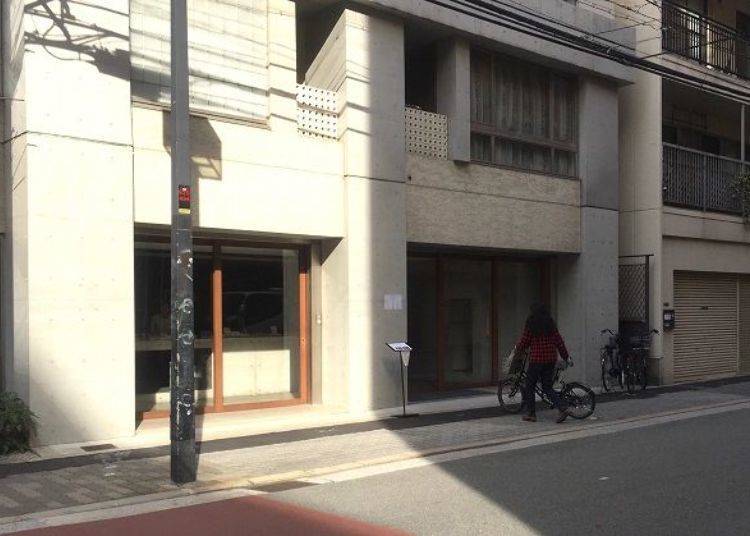
The main shop is located in Kishiwada and the shop in Shinmachi opened in 2009. As you can see in the photo, it has a plain concrete exterior and there is no signboard. There is a small piece of paper in the window on which the following is written:
“Zenzai now being served. Only Dark Dainagon azuki beans which only grow in Kasugacho Higashinaka of Tamba are used and cooked only with organic sugar. The zenzai is served with freshly roasted rice cake.”
This is the sort of temptation awaiting you inside the shop (it is also possible to eat inside the shop).
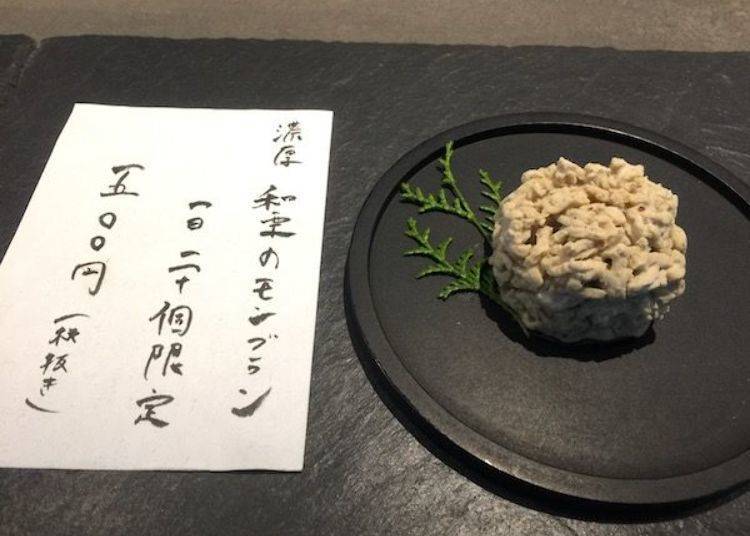
Better hold off on that. Today I have come to eat the zenzai. I proceeded to the eating area in the back of the store and sat down and waited a short time. Befitting a popular store, there was a constant flow of visitors: ladies who work in nearby offices, neighborhood mothers, and salesmen buying gifts.

The zenzai is prepared in the kitchen in the rear. And here is the long-awaited zenzai (1,280 yen).
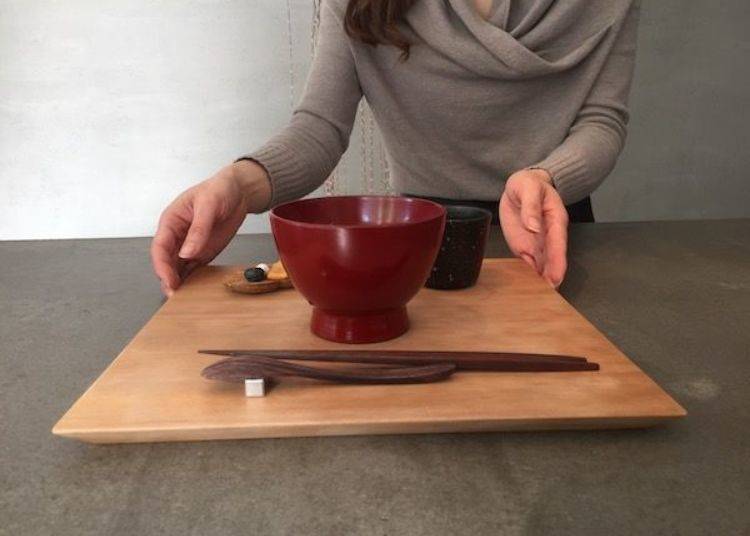
The attire of the clerk is not what you would expect to see of a confectionery store worker. It’s much too stylish.
The wooden chopsticks and spoon and the silver chopsticks rest appear to be hand-crafted and are also very stylish.
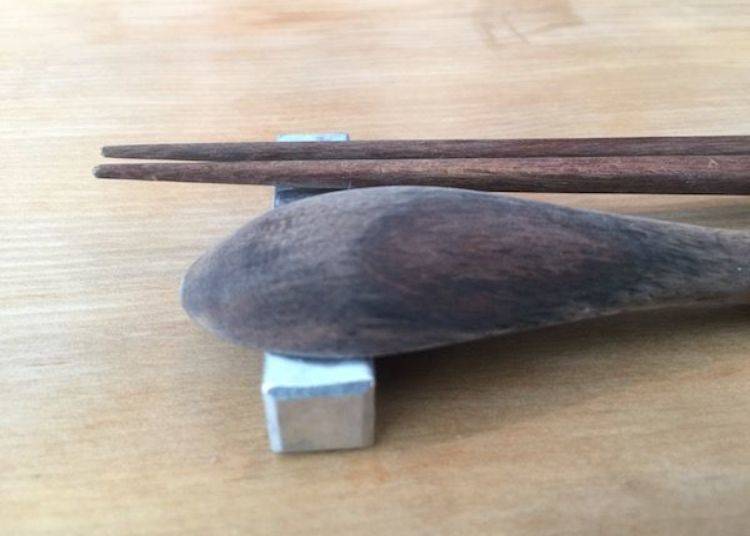
Two, slightly burnt plump pieces of rice cake in the zenzi first caught my eye. When I asked about them I was told that they were carefully roasted on a Kodaiji of Kyoto Kanaamitsuji wire mesh.
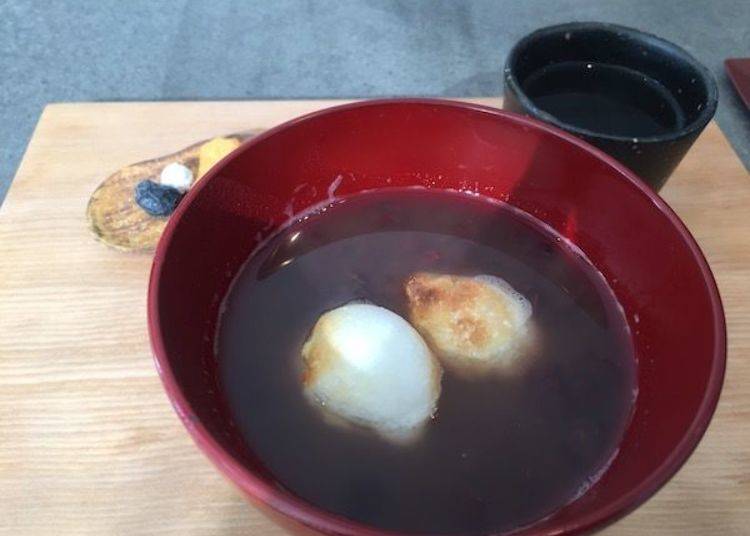
I was impressed by the exquisite sweetness. It was neither too much or too little. And the way it melted in my mouth was wonderful leaving no aftertaste.

It had a moist texture and exactly as the proverb goes, ”the mochi makes the mochi shop” which means, for the best results always go to a specialist. It is made from glutinous rice grown in fields fed by water from Harie, Takashima City, on the West Lake of Lake Biwa. Happiness is delivered with the burnt rice cake each time it is brought to my mouth. Eating with abandon the rice cake disappears into my stomach and all that remains is a lingering longing for more. Perhaps this is what is meant by “that which is delicious is but a dream”.
Since I was already here, I decided to try another popular item on the menu: matcha zenzai (1,500 yen).
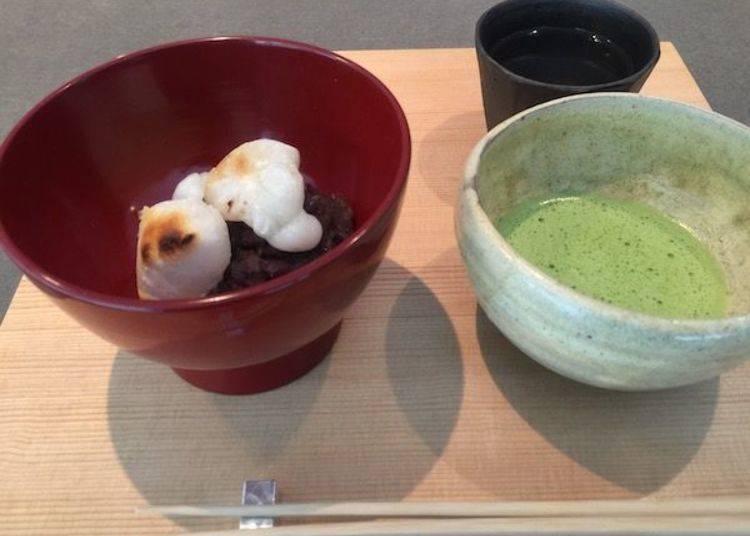
“Take the bowl of matcha in your hand and slowly pour it over the zenzai,” I was advised and that is what I did. That sort of advice is very helpful.
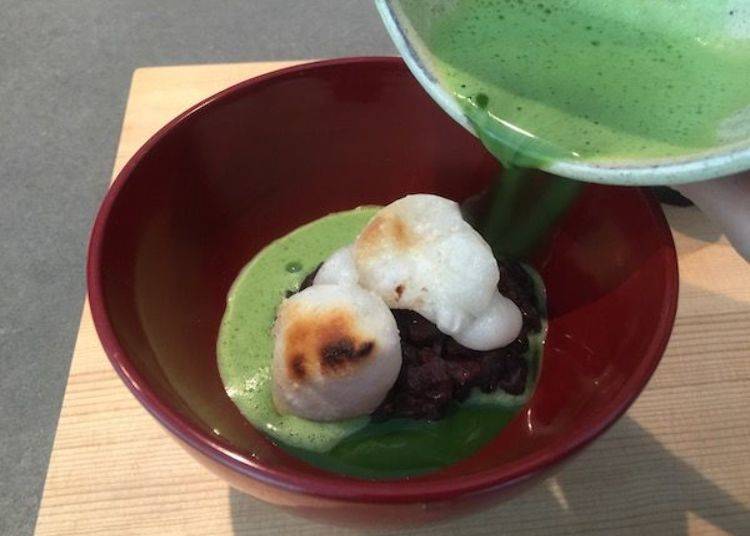
So delicious was the zenzai that the lady sitting next to me gave it her undivided attention. It was obviously so delicious that she never once put down her chopsticks to look at her smartphone.

Many places in Osaka serve salted kelp with zenzai, but on this day the zenzai was served with okaki rice cracker, hakka mame mint bean, and a black bean sweet (varies from day to day). The mint bean is made to be served with tea, but it can be bought separately. The crunchy sweets go well with another cup of tea after the zenzai.
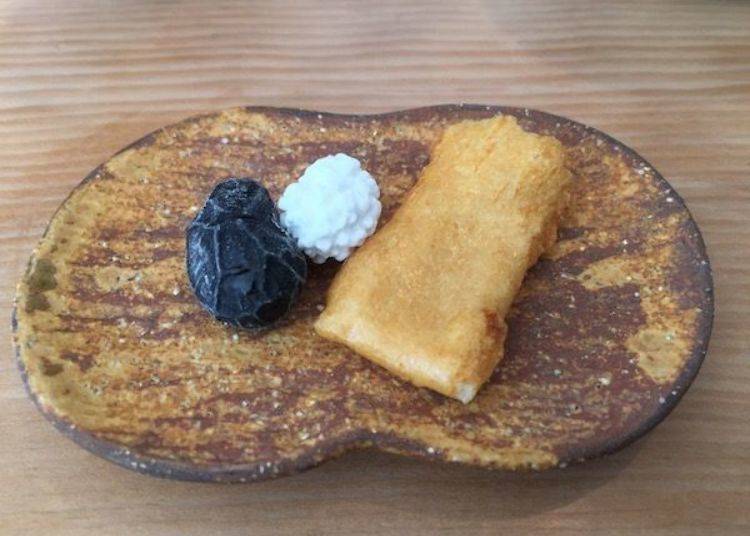
Extra cups of tea are served in different cups. That is a nice thoughtful touch.

The tea was exceedingly delicious and when I commented on that, I was told that a machine called an electron charger was used to maintain the ion balance in the mineral water to ensure its quality. On top of the machine is a Marantz amp. When I asked what that was, I was told,
“The vibrations from good music makes the water quality even better. The boss likes machines like this, so he added it.”
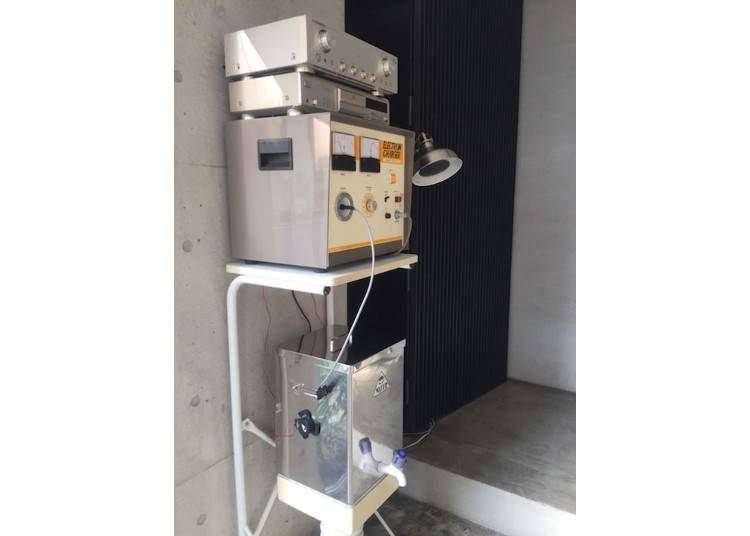
I didn't fully understand the principle behind that, but water being the source of good flavor, I presume that it has something to do with keeping it stable. Good rice cake and good azuki are the results.
Since I was here, I bought a gift when I left. I got a Shinmachi Monaka [bean‐jam‐filled wafer] (185 yen each) that honors this area that was once a geisha quarter. I love biting into the bean‐jam‐filled wafer. Such an awesome Japanese red bean sweet. I decided to save the Rich Japanese Chestnut Cream Cake for next time.
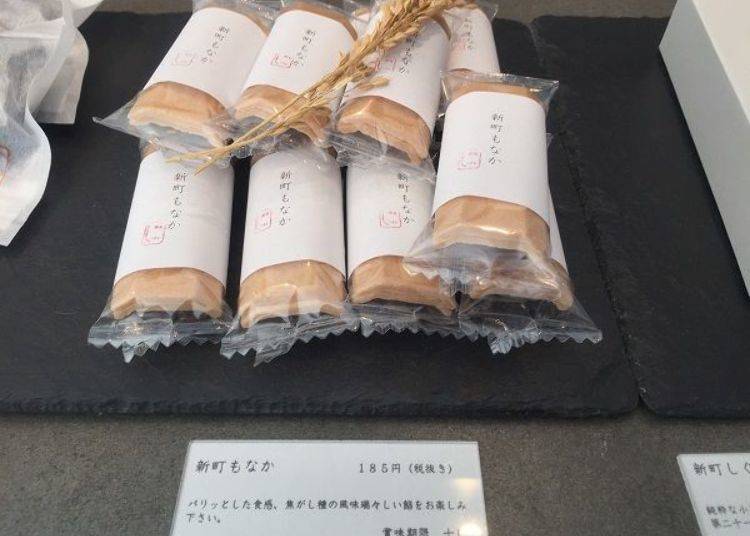
Walking north, I came upon a stone monument near a French restaurant that really seemed connected to the geisha quarter.
The first generation Nakamura Ganjiro, a famous Kabuki actor, was the great-grandfather of the current fourth-generation Ganjiro and who from the Meiji to the Showa era gave the Kabuki name Ganjiro superstar status.
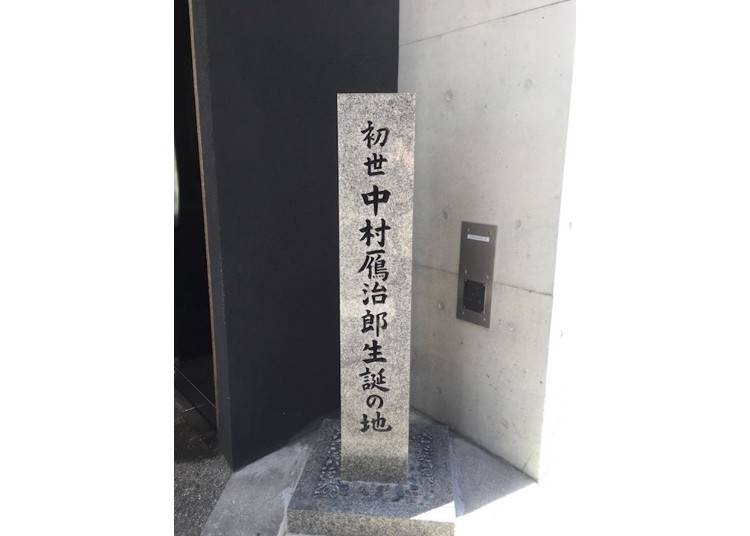
While musing about what has become of the memories of the geisha quarter, I came upon the Shinmachikita Park.
Since the beginning of the 21st century, the shops facing the park in the Nishi-ku area of Osaka have experienced a huge boom in business servicing young people and chic mothers.
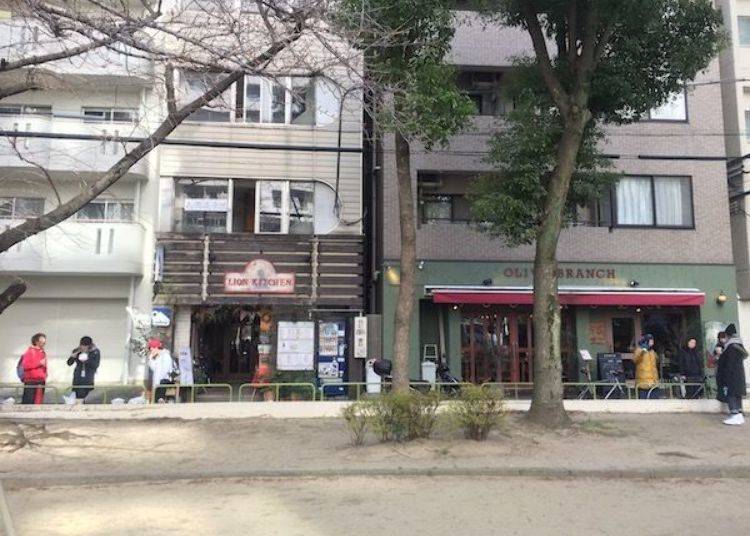
The Orix Theater is on the north side of the park. Formerly it was called the Osaka Kosei Nenkin Grand Hall. Next door to the west stands The Sanctus Tower, a 52-story luxury condominium building, on what formerly was the site of the Naka Hall.
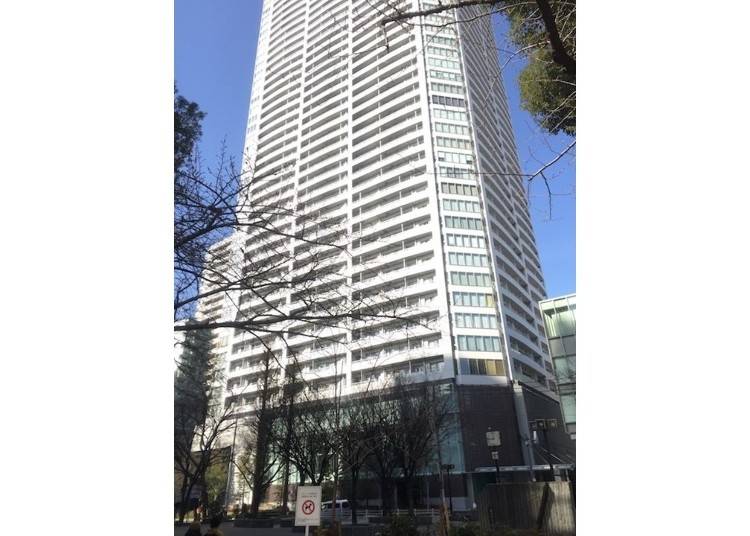
Speaking of which, in the 1980s, when an idol's concert was held at the Osaka Kosei Nenkin Main Hall, men with headbands and megaphones who were fans of the idol enthusiastically practiced their cheering in the park...I nostalgically thought about how things had changed since then as I walked to aid my digestion.

*Prices do not include tax. Zenzai is only available from early January through the end of March (times vary from year to year).
-
Mochiso Shizuku Shinmachi Shop餅匠しづく 新町店
- Address 1-17-17 Shinmachi, Nishi-ku, Osaka City, Osaka Prefecture
- Phone Number 06-6536-0805
Open: 12:00 p.m. ~ 7:00 p.m. (L.O. 6:00 p.m.)
Closed: unscheduled
2. Fukujudo Hidenobu: Serving "round" zenzai in the serene upscale neighborhood of Tezukayama
Fukujudo Hidenobu, the main store of a Japanese-style confectionery that has its main store in Tezukayama, got its start in Soemoncho, Minami (as did the current the main store).
Soemoncho, along with Shinmachi, Horie, and Kitashinchi, was one of the four geisha quarters in Nanchi (called Minami today) and was the liveliest of them all. The area was made by ladies of the night who were fans of zenzai soup, and that may have been by arrangement.
The Tezukayama Main Store opened in 1964, the year of the Tokyo Olympics, and the tea room Toki appeared when renovations were made in 1980.
In addition to the main store, there are also tea rooms in the Hankyu Sanbangai and Kintetsu Uehonmachi stores, but Zenzai is only served at the "roadside store". I think this setting is wonderful.
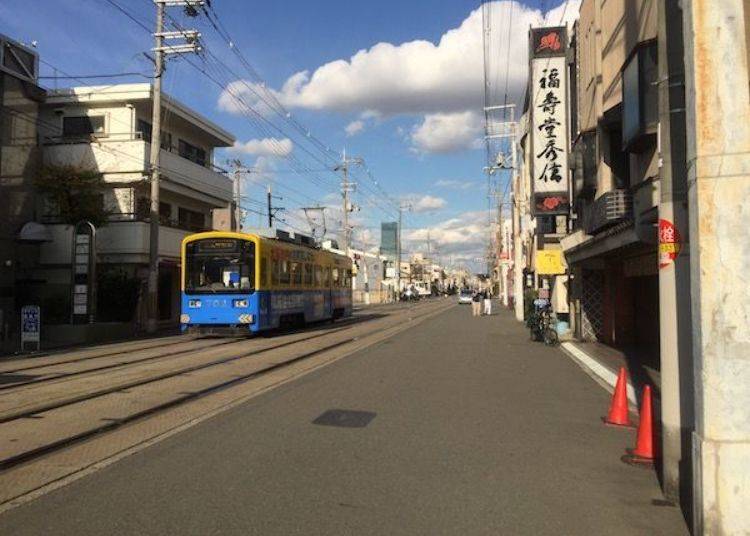
The Hankai Denki Uemachi Line, which began service in 1900, appeared frequently in important scenes of the NHK TV series "Teppan", but if you are out walking around for zenzai, riding this would be perfect, don't you think? Get off at the Tezukayama 3-chome stop.
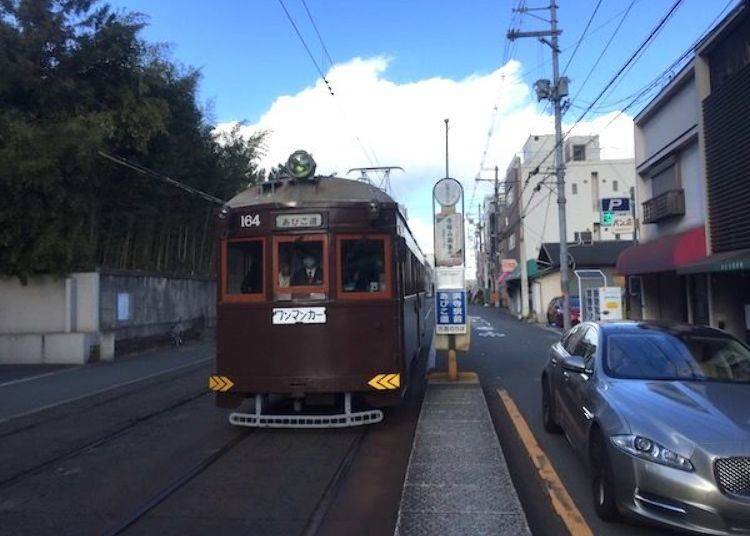
Since I had decided to take a walking tour of zenzai shops today, I took time to also visit the Bandai Ike Park near the tram stop. Unlike other parks in Osaka where young moms bring their children to play, Shinmachi feels more idyllic beneath the broad expanse of sky.

Ducks paddling lazily about. There really are many different sights to be seen in Osaka.
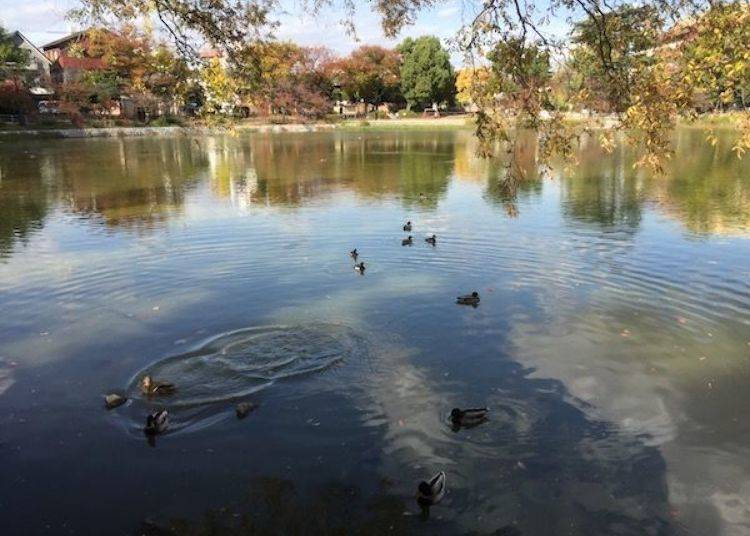
Circle around the park and if you go a bit north from the 3-chome tram stop you will arrive at the shop. The moment you enter you are greeted by a showcase and the aroma of a Kanmidokoro - a cafe featuring Japanese-style sweets - in an upscale neighborhood of the Showa era.
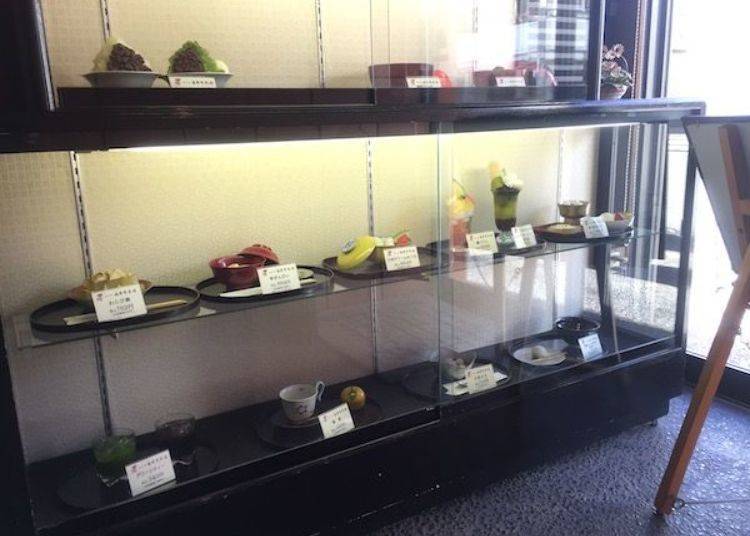
The atmosphere is very relaxed on a weekday afternoon. The view of the garden from the table next to the windows is lovely. It was very Tezukayama-like.

Customers at other tables thoughtfully did not make eye contact. It was very comfortable.

Zenzai in a covered bowl (800 yen) was served.
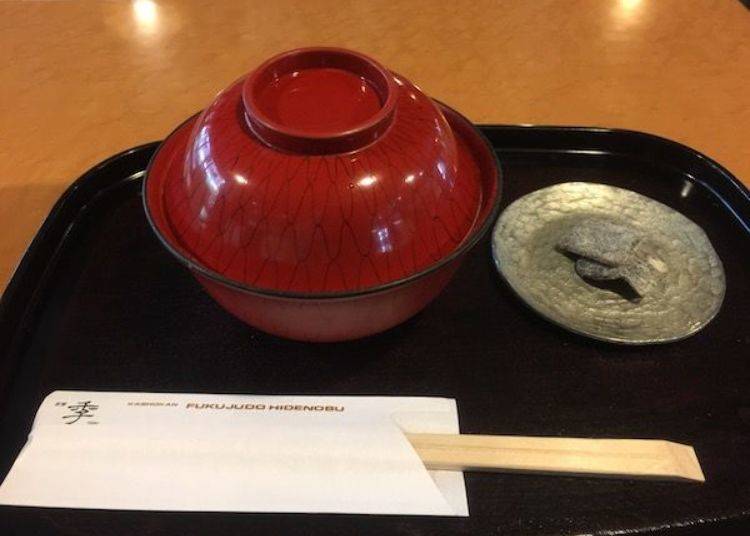
The rice cakes were square. In Kansai rice cakes are usually round, but when I asked about why these were square, even the veteran employees did not know.
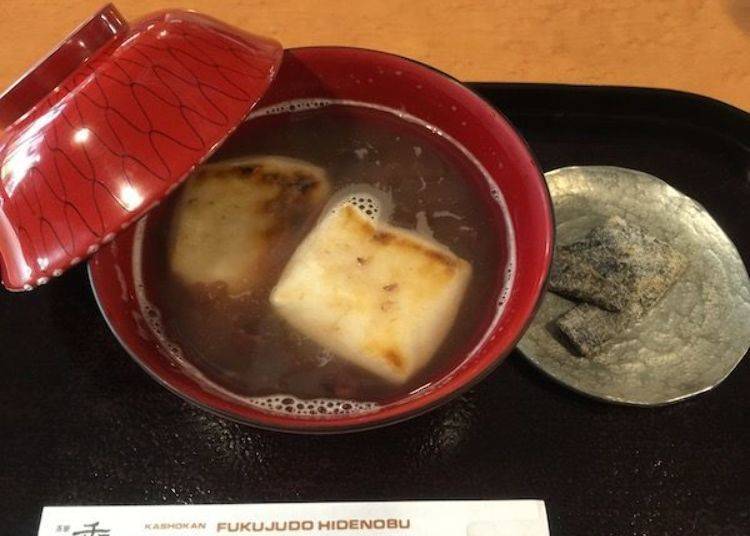
The kelp served on the small, oxidized silver plate was reserved in a cool way
Time to try it.

The clickety-clack of the tram nearby, the soft instrumental background music - these are the comforting “sounds of Tezukayama” heard nowhere else.
I felt the overall balance of the zenzai was good. The individual ingredients did not compete with each other but harmoniously blended together. Still, I have to admit that the main star of the composition was the azuki bean jam that had been cooked to perfection, its sweetness further enhanced by rice cake.
Several days later I visited the Fukujudo Hidenobu factory in Sakai to ask what was the secret to the azuki bean jam and at that time the factory manager Mr. Koji Okano explained as follows.
“On the first day we just soak the azuki beans in water. After letting them soak overnight, on the second day we drain the water and look at the color of the beans. Then we once again add water and pre-cook them to remove any bitterness. This pre-cooking to remove the bitterness is a key point. Then in a separate kettle we boil granulated sugar and water to make a sugar solution which we then add to the beans again and let them soak overnight.”
Sounds like a lot of work to make Japanese red bean sweets!

"On the third day, we remove the azuki from the sugar solution that gives them their delicious flavor. Once again we examine the color of the beans that have absorbed the sugary solution. Removing them from the sugar solution is rather like putting them on a diet. Then we return them to the sugar solution for the main cooking. The temperature is slowly raised and the water is boiled out of the sugar solution and finally the rich flavor of the zenzai is achieved.”
And is that the end of the process, I asked.
“No, we let them sit again overnight.” A lot of effort goes into this.
“The zenzai is then delivered to the tea rooms on the fourth day. If any of the steps in the process are abbreviated, the zenzai would not turn out delicious. Azuki beans are very honest!
Watching the smiling Mr. Okano politely explain in detail this process he struck me as having the character of a master chef. He added, “If you would like to see how delicious the azuki used in zenzai are, why don’t you try this amanatto [sweetened azuki beans] (400 yen for 450 g.)? Amanatto is thought of as a candy, but these are slightly different.”
I had to admit they were different. They reminded me of zenzai.
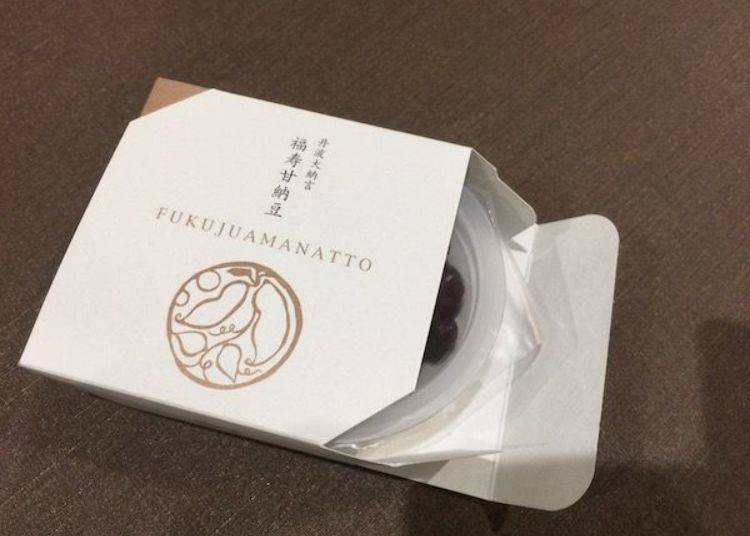
They naturally go well with Japanese tea and coffee, but would definitely also go well with a straight scotch. Eat them with a small spoon or a toothpick.
Trying to decide what to buy in the shop next to the tea room as a gift to take back is also an enjoyable quandary.
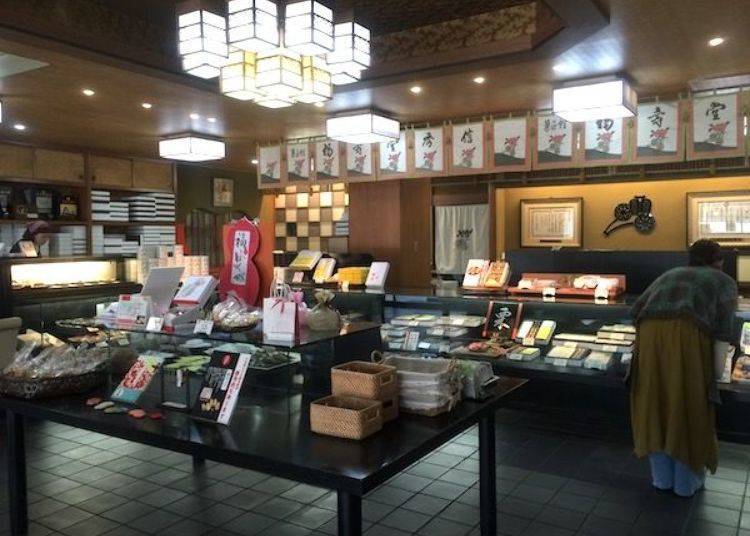
According to a male editor in his thirties who was born and raised in Tezukayama, there are also many other famous Japanese red bean sweets and products in addition to zenzai.
"My grandmother (who is over 90 years old) basically served two dishes: Inaniwa Udon (900 yen; 1,200 yen with red bean rice) and fresh yuba-don (850 yen). When my mom was out or when I went out for a walk I would often visit her."
I’m sure that he must have visited there many times.
“My mom also eats a lot of sweets and she especially likes warabimochi [bracken-starch dumpling] parfaits and shaved ice with kuromitsu [brown sugar syrup].” I’m sure there are many Tezukayama families like his.
Tezukayama does not have chain stores or Seattle-based cafes. “Coffee shops are steadily disappearing from the town, so it’s reassuring that the Poire tea room is still in business.”
Hearing that makes it apparent that cafes featuring Japanese-style sweets are still loved by local residents.
On my way home I walked north and at the Himematsu intersection glanced at Poire, then boarded the Uemachi Line. Subways just don’t suit the Tezukayama area.
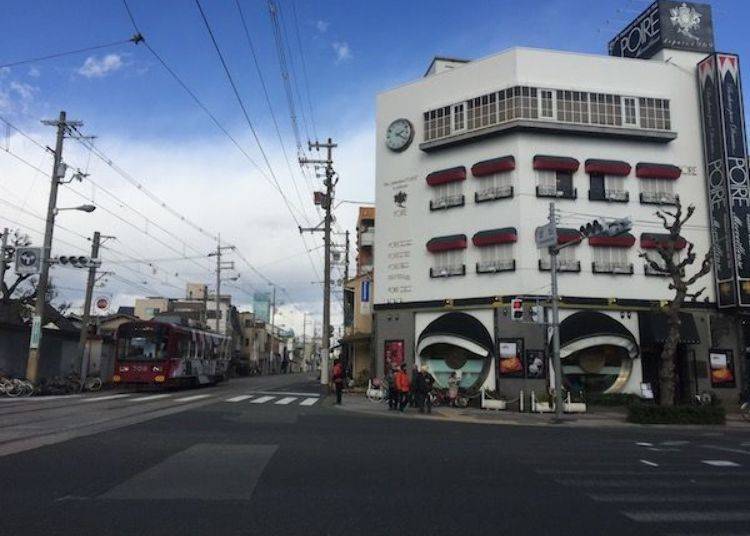
*All prices do not include tax. Zenzai is only available from early October through the end of March (only at the Kintetsu Uehonmachi store is it available from September to June)
-
Fukujudo Hidenobu Tezukayama Main Tea Room Toki福壽堂秀信 帝塚山本店 茶寮「季」
- Address 1-4-12 Tezukayama Higashi, Sumiyoshi-ku, Osaka City, Osaka Prefecture
- Phone Number 06-6671-5840
Open: 10:00 a.m. ~ 6:00 p.m.
Closed: January 1
3. Sakainoma: Cafe serving Sakai-style zenzai
The Hankai Denki Uemachi Line mentioned earlier joins the Hankai Line at Sumiyoshi and then runs on to Hamaderaekimae in Sakai. Along the way, after crossing the Yamato River, from the Takasu Shrine stop to the Goryomae stop, extending about 3 km., is the urban area of Old Sakai.
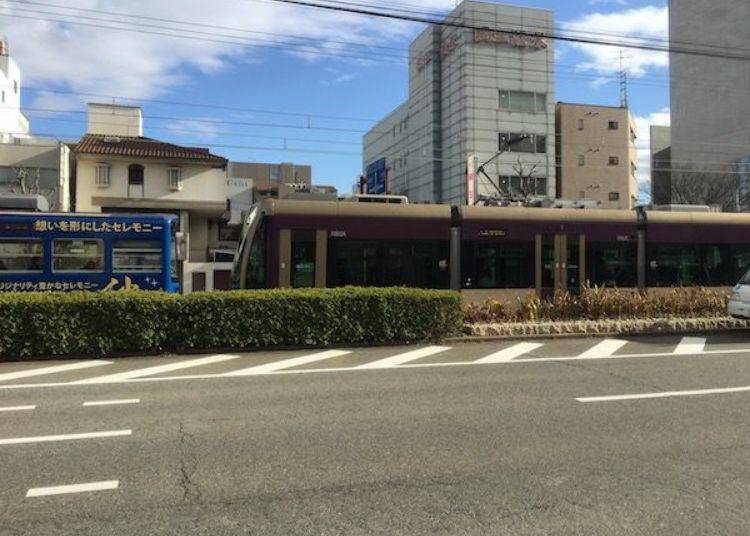
From the late Middle Ages to the early modern period, this Old Sakai was always at center stage in Japanese history.
There were many who played active roles in Sakai, such as Luis Frois, Francisco Xavier, Miyoshi Chokei, Ruson Sukezaemon, Oda Nobunaga, Sen no Rikyu, Toyotomi Hideyoshi, Tokugawa Ieyasu ...and that’s just to mention a few.
It's a narrow area similar to Semba in Osaka so just walking a short distance historical locations appear one after the other, such as "the road on which Tokugawa Ieyasu led his troops out of the city from Myokokuji", "the shrine in which the name of Sen no Rikyu is first mentioned in a registry", and "the former site of a wealthy merchant's estate where Xavier once stayed"; this is an area history buffs would love.
And we cannot forget a well-known figure in recent history, Akiko Yosano. The long-established Japanese-style confectionery shop called Surugaya, which was her birthplace, was located between the Shukuin on the Hankyu Line and Oshoji, and a little ways from Shukuin there is a monument indicating that this was the former site of her birthplace along the Kishu Kaido (Daidosuji).
![▲Going further slightly south, there is a museum called Sakai Risho no Mori [Sakai Plaza of Rikyu and Akiko], which celebrates the achievements of Rikyu and Akiko.](https://rimage.gnst.jp/livejapan.com/public/article/detail/a/20/00/a2000084/img/en/a2000084_parts_5cf6231b44208.jpg?20201215092233&q=80)
There are many mansions here which could be called Tatedaore, which has the nuance of meaning they were so expensive that they nearly broke the owners, and from the Middle Ages Sakai enjoyed great economic prosperity, so it is not surprising that Wagashiya [Japanese-style confectioneries] had a special status.
Even now in this area there are still several long-established Japanese confectioneries.
The Maruichi Confectionery Store, located just across Daidosuji from Akiko's birthplace, was founded in 1895 when she was 17 years old.
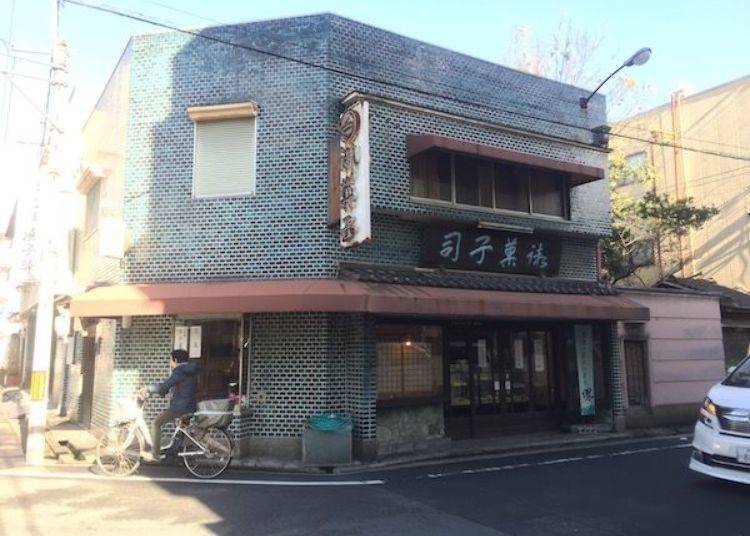
Also nearby to the west of her birthplace is the Honke Kojima famous for its keshimochi [poppy seed rice cake] which was founded in 1532 when Rikyu was 10 years old, and today both shops are still in operation.
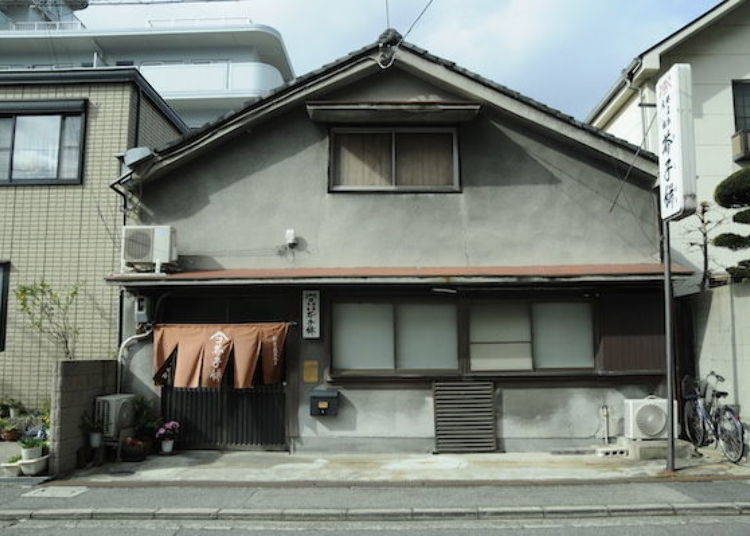
But not everything in Sakai has such long histories. This classical town is continuously seeing new establishments spring up in the old parts of town and they are becoming places were young people like to gather. If you go a little ways north from the Oshoji tram stop you will come to the Sakainoma Cafe and Residence. It opened in the fall of 2016.
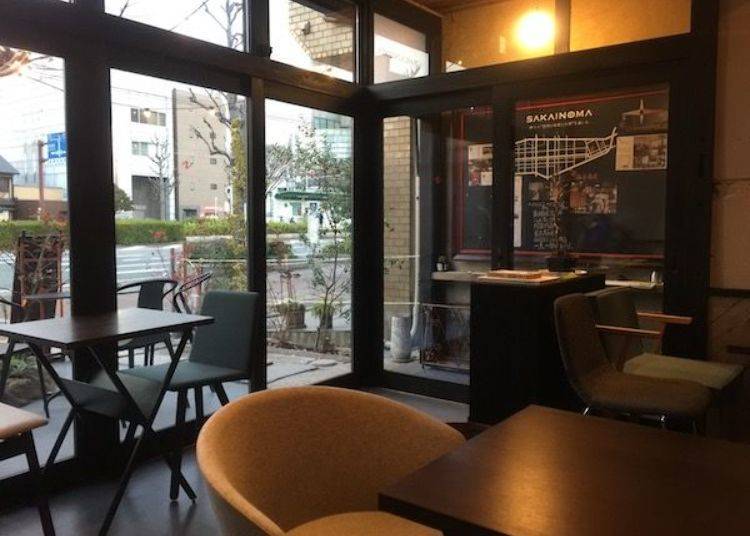
It is located in an old merchant house that was built about 70 years ago that has been renovated, and in the back there is a guest house with two rooms than can accommodate overnight guests. It was built to meet the growing demand of tourists, including foreigners, who want to go sightseeing in Sakai.
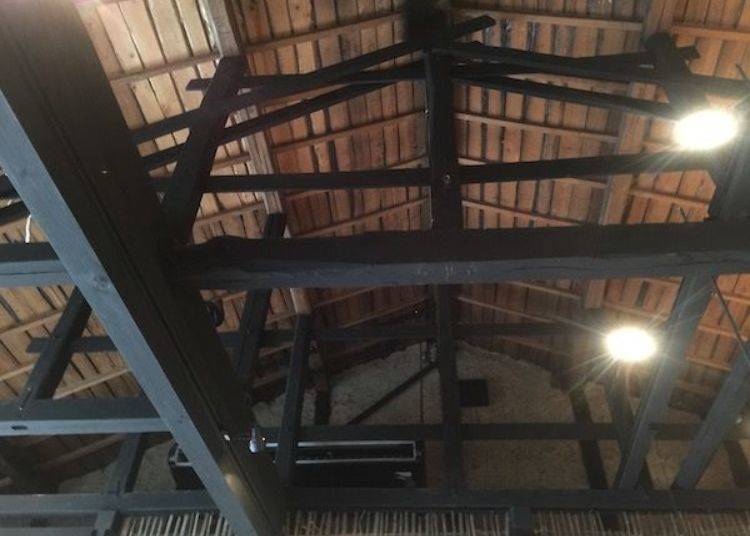
It was designed by Mr. Yoshihiko Mamiya. He has not only designed spaces in the Kansai region, but also popular cafes, restaurants, bars, and other commercial spaces in Tokyo, Shanghai, and elsewhere; the popular Tsubo Seicha Honpo in Sakai is also one of his creations. Mr. Mamiya’s birthplace is also close to the Hankai Line and it, too, is operated today as a guest house.
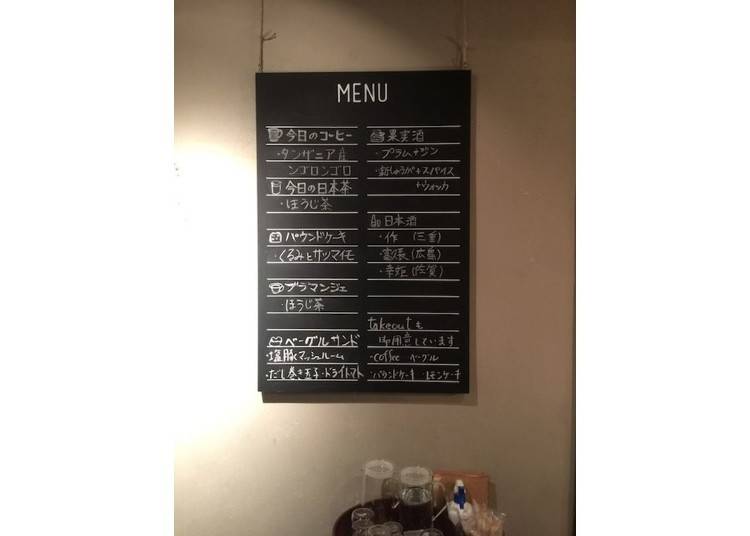
Sakainoma can seat about 20 and he says that he is always looking for new ways to collaborate with local shops and producers in order to be able to offer "Sakai-type" dishes and drinks, something that is important to him.
The zenzai (680 yen, 880 yen with tea) is not out of the ordinary. Don’t be fooled by the cute cup it comes in. One sip and I realized that this is different from zenzai served in cafes!
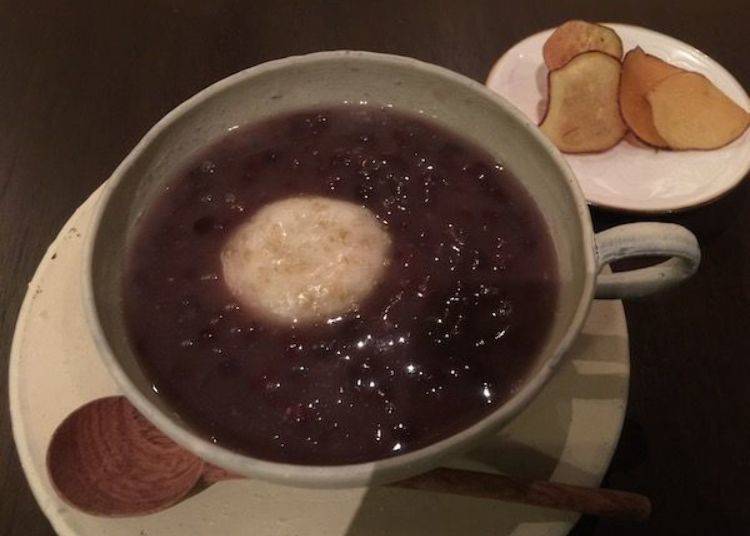
I heard that Yaogen Raikodo, established more than 200 years ago and famous for its cinnamon rice cake, makes the bean jam used in the Sakainoma zenzai. I was impressed by the local networking.
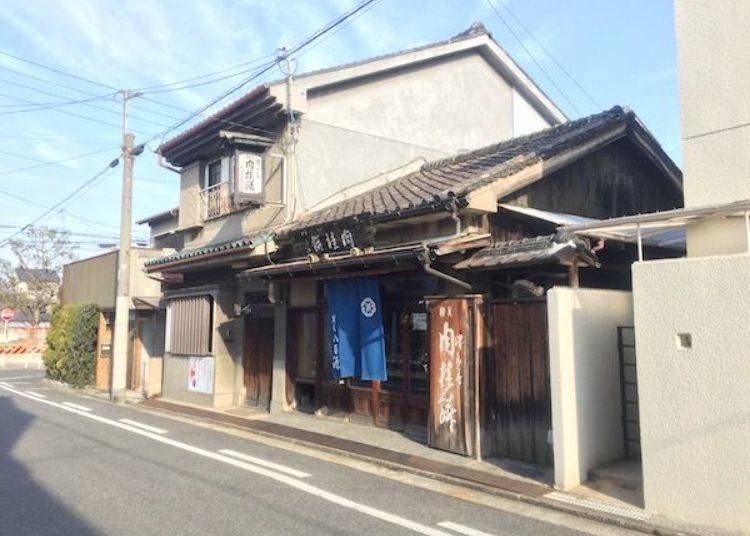
For the bean jam used in its zenzai, Yaogen Raikodo uses a type of Tokachi azuki bean called North Roman, carefully selecting larger beans, together with the azuki used in Japanese-style confectionery. That, I was told, is what fully brings out the flavor of the azuki.

Also, the texture of the rice cake is perfect. It is chewy and plump. Mr. Michiyo Nishiyori, one of the staff, explained about the solid local natural cultivation network they have citing the rice cake obtained for use in the zenzai that is produced by the Harie Nonki Farm which uses the famous water of Takashima City, Kosai. The “editing ability” of Sakai is awesome.
![▲When you order it with tea, hojicha [roasted green tea] is served in a teapot](https://rimage.gnst.jp/livejapan.com/public/article/detail/a/20/00/a2000084/img/en/a2000084_parts_5cf62772c8a70.jpg?20201215092233&q=80)
I was also tempted by the offer to try the Yaogen cinnamon, which I gladly did.
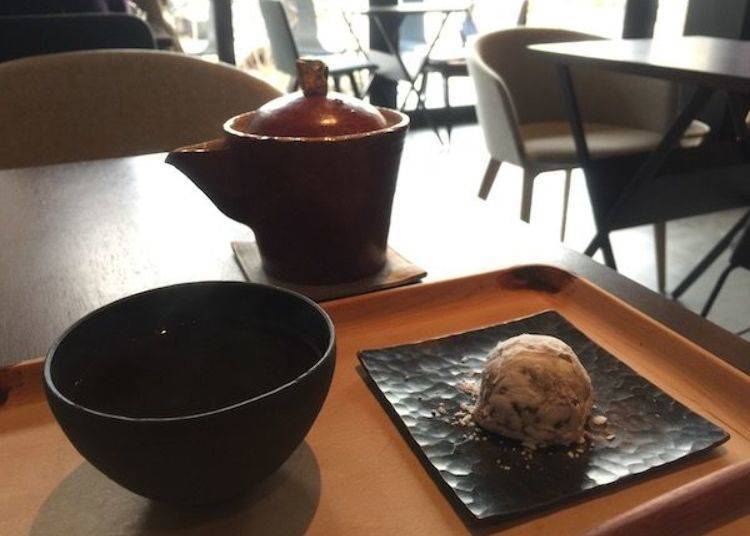
The tea that was served with the zenzai was hojicha from the long-established Matsukura Tea Store of Old Sakai, but this tea, also from Matsukura, is called Kawayanagi, which is a green tea, but one which has large tea leaves similar to those of bancha [coarse tea].
The deep, bitter flavor of the tea is perfectly complemented by the cinnamon rice cake.
I thought I would walk a bit after leaving the shop and it was beginning to get dark. The illumination outside Sakainoma looked beautiful.

I walked to the large park where I was able to watch the sun set. During the Middle Ages the estate of the wealthy merchant Hibiya Ryokei was in this area and in 1550 he extended his hospitality to Francisco Xavier when he arrived in Japan. After the war the property was reborn as a public rest area and named Xavier Park.
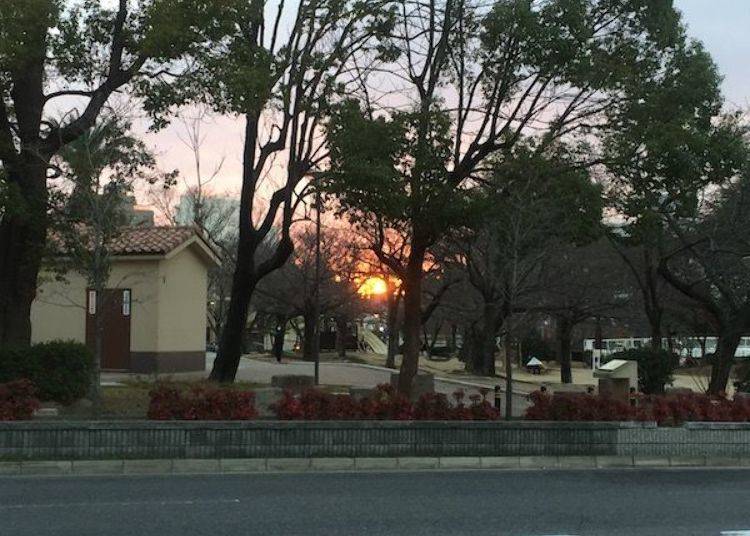
I remembered that the title of the long-running TV drama set here in Sakai was called Ogon no Hibi [Days of Gold].
*Prices do not include tax. Zenzai is only available from the middle of December through the end of March.
-
Sakainoma Cafe & Residenceサカイノマ カフェ&レジデンス
- Address 1-1-23 Kumano-cho Nishi, Sakai-ku, Osaka City, Osaka Prefecture
- Phone Number 072-275-7060
Open: 11:00 a.m. ~ 9:00 p.m.
Closed: Wednesdays
You can leisurely relax alone at any of these three shops introduced above. Enjoying Meoto Zenzai, served in two bowls, with someone else in Hozenji Yokocho is of course wonderful, but for a change of pace, if you take a solitary walk around the city there is a variety of wonderful zenzai experiences awaiting you.
Not only will you be able to enjoy a delicious treat, but also be rewarded with learning the history of the shops’ origins, and in so doing, gain a deeper understanding of Osaka and its culinary history. Take the streetcar and go at a leisurely pace!
Text by:140B
- Area
- Category
*Prices and options mentioned are subject to change.
*Unless stated otherwise, all prices include tax.
Popular Tours & Activitiess
Recommended places for you
-

ISHIDAYA Hanare
Yakiniku
Kobe, Sannomiya, Kitano
-

Kiyomizu-dera Temple
Temples
Gion, Kawaramachi, Kiyomizu-dera Temple
-

Kambei Sannomiyahonten
Yakiniku
Kobe, Sannomiya, Kitano
-
Goods

Yoshida Gennojo-Roho Kyoto Buddhist Altars
Gift Shops
Nijo Castle, Kyoto Imperial Palace
-

Jukuseiniku-to Namamottsuarera Nikubaru Italian Nikutaria Sannomiya
Izakaya
Kobe, Sannomiya, Kitano
-

Kanzenkoshitsuyakinikutabehodai Gyugyu Paradise Sannomiya
Yakiniku
Kobe, Sannomiya, Kitano
-
Ad

Recharge and Relax with a Healing Getaway at Kamenoi Hotel Toba
-

Curious About Sake? I Visited a Sake Brewery in Japan and Here's What I Learned
-
Ad

Discover Timeless Beauty: Kimono-en, a Web Magazine Exploring the Spirit of Kimono
-
Ad

Experiencing Manga as Culture, Not Just Reading It: Expo 2025 with Rumiko Takahashi
-

Best Things to Do and See Around Kyoto & Osaka in September: Events and Festivals in Kansai
-

New Way to Reach Koyasan! Ride Nankai's 'GRAN Tenku' for a Heavenly Journey
by: Guest Contributor
Inspiration for Accommodations
-

Spacious Family Hotel in Namba: 20 Comfortable Stays for Family Fun
-

Charming Hotels to Enjoy the Spectacular Views of Arashiyama's Autumn Leaves from Your Room
-

Experience Stunning Views of Osaka Castle from Private Spaces: Top Hotels Near Osaka Castle
-

Recommended by Visitors! Arashiyama's Best-Rated Hotels
-

Family-Friendly Universal Studios Japan Hotel with Excellent Access
-

Enjoy a Comfortable Stay in Osaka! 10 Hotels with Convenient Airport Shuttle Services
-

Top 10 Recommended Hotels Near Namba Station with Great Access
-

Enjoy Night Views from Your Room! Recommended Hotels in Namba Area
-

How to Make Chicken Cheese Katsu - Japan's Crispy Fried Chicken With Gooey Molten Cheese Center
-

Michelin Star Restaurants & More: 3 Best Okonomiyaki Shops in Dotonbori Osaka
-

Why Osaka Tennoji Zoo is So Popular with Foreign Tourists (Guide & Highlights)
-

Ebi Fry (Japanese Fried Shrimp) Recipe: Perfect Harmony Of Crunchy Breading and Super Plump Shrimp (Video)
-

Fine Japanese Dining in Kyoto! Top 3 Japanese Restaurants in Kiyamachi and Pontocho Geisha Districts
-

Secrets to Shopping in Japan: Guide to Annual Sales in Japan & Where to Shop
by: Miyu Shimada
- #best gourmet Osaka
- #things to do Osaka
- #what to do in kyoto
- #what to bring to japan
- #best gourmet Kyoto
- #new years in Osaka
- #what to buy in nanba
- #Visiting Osaka
- #onsen tattoo friendly arima
- #daiso
- #Visiting Kyoto
- #best japanese soft drinks
- #japanese fashion culture
- #japanese convenience store snacks
- #japanese nail trends












